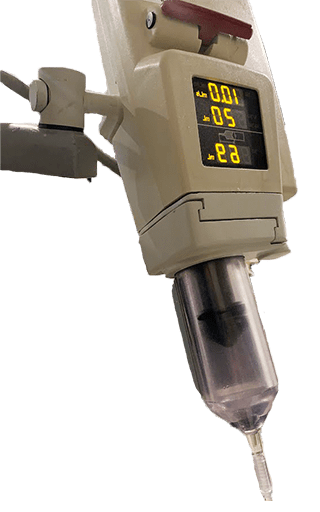Medical Murray offers Power Injection testing to measure catheter flow rates and pressures. We use the same Power Injector equipment used in hospitals, and it is capable of measuring pressure rates up to 1,200 psi and flow rates up to 40 mL/sec.
Power Injection testing can simulate flow rates and pressures to determine specifications or to ensure that a device will not fail when fluid is injected. Power injectable devices may include angiographic catheters, peripheral IV catheters, PICCs, chest ports, central lines, and select dialysis catheters.
Testing Process & Services

After attaching the device to the Power Injector, a constant flow of the test fluid is injected and the resultant pressure is measured. Common test fluids include contrast or a mixture of water and glycerin to mimic the viscosity of the fluids to be used in the clinic.
The burst pressure and location can be determined by measuring the maximum pressure that the device can withstand during injection. Flow rates are then measured at the rate typical for clinical use. Maximum flow rate is recorded prior to device burst, or at the maximum pressure put out by the Power Injector.
